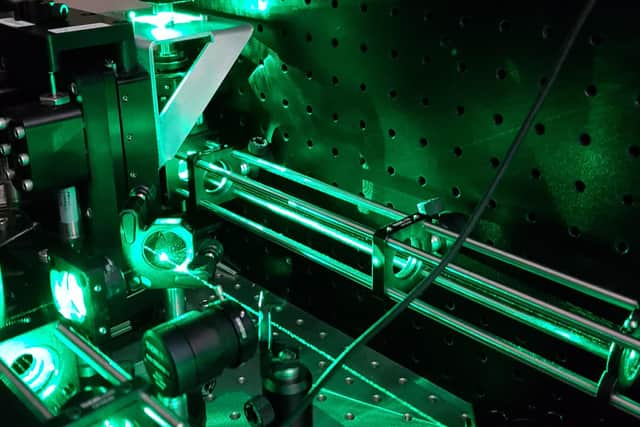Heriot-Watt's manufacturing breakthrough will improve cancer detection and laser surgery
Such devices are used for the diagnosis and treatment of many diseases including cancer detection and laser surgery. However, up to now, they have been expensive to make, limiting the adoption of new breakthrough devices by hospitals and clinics.
The new manufacturing technique developed by Edinburgh’s Heriot-Watt is said to offer lower costs and is highly repeatable, which could accelerate the adoption of new devices to improve patient care.
Advertisement
Hide AdAdvertisement
Hide AdThe team has also developed new micro-optic systems for applications in minimally invasive precision microsurgery using ultrafast laser pulses delivered by specialist fibres developed by the University of Bath.


The results were unveiled as part of a wider report into a five-year £1.3 million grant, funded by the Engineering and Physical Sciences Research Council (EPSRC).
Professor Robert Thomson from Heriot-Watt University led the project team that has developed the new manufacturing technique.
He said: “Medical device technologies are vital for the detection and treatment of a huge number of diseases and healthcare challenges.
“Increasingly, micro-devices are being developed for minimally invasive measurement and therapy, for example in cancer detection and precision laser surgery. However, up to now, they have been very expensive to produce.
“Coming up with a medical device innovation is exciting but if it can’t be made commercially, it won’t be used in hospitals and clinics. To encourage take-up of state-of-the-art devices, it is vital to provide low-cost and highly repeatable manufacturing solutions.
“We’ve achieved a major manufacturing advance using laser beam shaping techniques. This gives us control of the shape of the focal volume, and therefore more efficient use of the available laser pulse energy during manufacture.”
Professor Duncan Hand was principal investigator across the 4MD Platform grant which delivered this and 18 other individual projects, supported by a range of medical and industrial partners.
Advertisement
Hide AdAdvertisement
Hide AdProjects included a new technique to sterilise ambulances using ultraviolet light, an ultrasound needle to better position epidurals during labour and a proof-of-concept study using lasers to overcome existing limitations of conventional neurosurgery for cleaning brain cancer margins.
Hand said: “Our overarching objective was to use the flexibility of the Platform grant to develop and exploit manufacturing technologies to provide medical device manufacture that is both practical and commercially viable, leading to new and improved healthcare solutions.
“The 4MD Platform grant has led to £11.3m of follow-on funding for translational research and the development of medical devices, including the creation of the Medical Device Manufacturing Centre.
“We applied our 4MD Platform grant strategically across a range of different projects, which allowed feasibility studies and proof-of-concepts to be delivered which has led to considerable follow-on funding and research.”
4MD was funded via an EPSRC Platform grant scheme that is no longer available. Heriot-Watt is now calling for a similar scheme that provides the same flexibility to be considered by funders.
It has highlighted the value for money and breadth of innovation that a strategic grant can facilitate in developing new research activity.
Comments
Want to join the conversation? Please or to comment on this article.